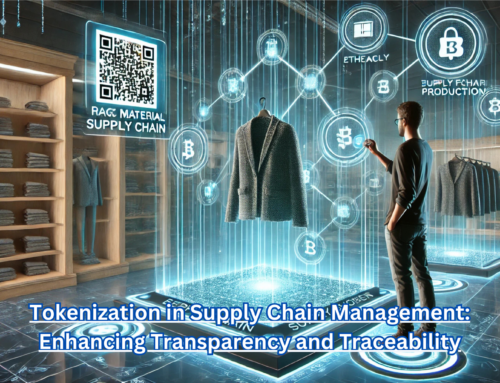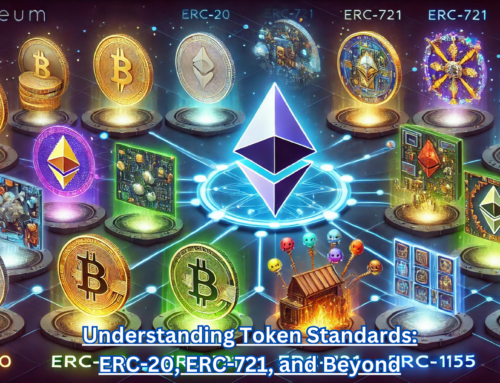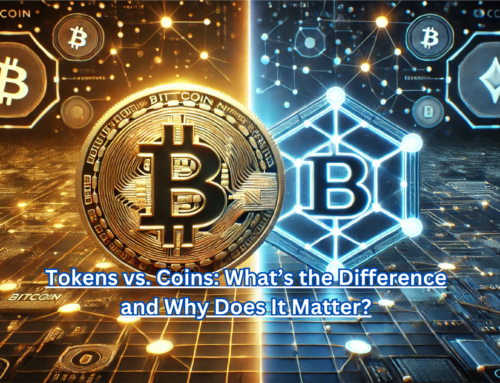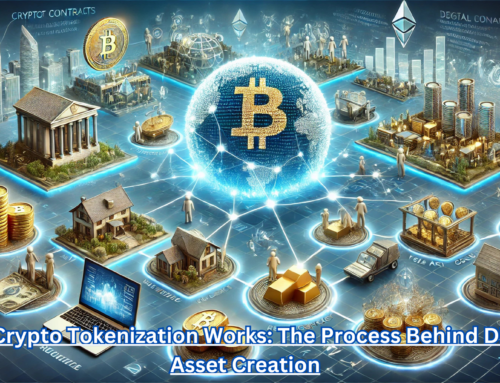You own a rare piece of art—a vibrant, abstract painting by a renowned artist. The painting is worth millions, but it sits on your wall, accessible only to the wealthiest collectors. Now, picture selling small pieces of ownership in that painting, allowing hundreds or even thousands of people to hold a share of its value as easily as buying and selling stock. That’s the power of tokenization—a concept revolutionizing how we think about ownership in the digital age. Let’s explore it in this asset tokenization guide.
The Concept of Tokenization: Transforming Ownership
Tokenization may sound futuristic, but it builds on an age-old idea: turning valuable assets into tradable shares. Stocks, bonds, and real estate investment trusts (REITs) have done this for decades. However, traditional markets impose borders, bureaucracy, and high entry costs. Tokenization, powered by blockchain technology, eliminates these barriers by creating digital representations—or “tokens”—of physical or intangible assets. People can trade these tokens globally with unprecedented ease and transparency.
Blockchain Technology: The Backbone of Tokenization
To understand tokenization, consider blockchain—the technology making it possible. At its core, blockchain operates as a distributed ledger, a decentralized and tamper-proof record tracking transactions. When an asset undergoes tokenization, a digital token emerges on the blockchain to represent that asset. This token contains essential information, including proof of ownership, transaction history, and transferability rules. Once created, people can buy, sell, or transfer these tokens on blockchain platforms, removing the need for intermediaries like banks or brokers.
Real-World Applications of Tokenization
A real estate developer, for example, can tokenize a luxury apartment complex. Instead of requiring individuals to purchase an entire property, tokenization allows them to buy fractional ownership through digital tokens. These tokens can then be traded on secondary markets, unlocking liquidity typically missing from traditional real estate investments.
Governance and Management in Tokenized Systems
But who manages the real-world asset when ownership spreads across thousands of people? In tokenized systems, a legal entity or custodian typically oversees the asset. Often, a Special Purpose Vehicle (SPV) or similar legal structure holds and manages the physical asset, ensuring compliance, maintenance, and operations run smoothly. Token holders own digital claims to the asset, not the physical object itself.
For assets requiring secure storage, such as art or gold, a regulated financial institution acts as the custodian. In the case of tokenized real estate or infrastructure, a professional asset manager oversees leasing, repairs, and marketing. Token holders usually receive a share of profits—rental income or dividends—based on ownership stakes. Some platforms even grant voting rights, allowing investors to influence key decisions regarding the asset’s management.
Consider a tokenized solar farm project. Token holders might vote on whether to expand operations to a new site, while a management team handles technical and logistical challenges. Smart contracts—blockchain programs executing predefined rules without human intervention—often automate these governance processes.
Expanding Horizons: Tokenization Beyond Tangible Assets
Tokenization extends beyond tangible assets like real estate and art. Companies are applying it to financial instruments, intellectual property, and commodities like gold. Some firms create tokenized securities—digital equivalents of company shares—while others experiment with tokenizing royalties from music and film projects. The possibilities are vast, and opportunities continue to multiply.
Democratizing Investment Through Tokenization
Tokenization’s true transformation lies in democratizing access. Traditional markets often require significant wealth or connections to invest in high-value assets. Tokenization lowers these barriers, allowing anyone with a smartphone and an internet connection to invest. Someone in Indonesia, for instance, can own a stake in a tokenized New York skyscraper. These digital markets have the potential to unlock financial inclusion on a global scale.
Challenges Facing Tokenization
Despite its promise, tokenization faces challenges. Regulatory uncertainty remains a major hurdle, as different jurisdictions impose varying definitions and rules on tokenized assets. Trust is another concern—high-profile hacks, scams, and market volatility make some investors wary. The technology, while powerful, continues to evolve, and seamless integration between tokenization platforms and traditional financial systems still requires work.
Another risk involves over-speculation. Because digital tokens can be traded quickly, they are prone to hype and rapid price swings. Without proper due diligence, investors may fall victim to trends lacking real-world value. Transparency and education remain vital as the industry matures.
Despite these obstacles, innovation continues to thrive. Major financial institutions, including banks, investment firms, and governments, are exploring tokenization. Central bank digital currencies (CBDCs) exemplify how tokenization concepts integrate into mainstream finance. Large-scale projects in tokenized infrastructure, energy, and art further validate this new economic model.
One of tokenization’s most compelling aspects is its ability to redefine ownership. Traditionally, owning an asset meant having physical control over it. Tokenization divides ownership into small, digital units, each with specific rights and privileges. This opens new possibilities for collaboration and co-ownership. Imagine a community tokenizing a renewable energy project, where each token holder has a stake in its success and shares in the profits. This model fosters collective investment and participation in ways previously unimaginable.
Getting Started with Tokenization
If you’re new to tokenization, start by learning about blockchain technology and its applications. Understanding key concepts like smart contracts will clarify how tokenization works on a technical level. Research platforms offering tokenized assets, as the landscape evolves rapidly. Seek projects with strong governance, transparency, and regulatory compliance.
Why does this matter to you? Because tokenization is reshaping ownership and investment. Whether you’re a tech-savvy investor or simply curious about the digital economy, tokenized assets create new opportunities to diversify portfolios, access global markets, and participate in innovative projects. Just as the internet transformed communication and commerce, blockchain-based tokenization is revolutionizing how we own and exchange value.
The Future of Tokenization
In the coming years, tokenization will likely impact every sector—from real estate to sports memorabilia. The question isn’t whether this shift will happen, but how quickly and extensively. By staying informed and engaged, you can position yourself to benefit from the new era of digital ownership.
Take the next step. Explore blockchain. Learn about tokenized assets. The future of ownership is unfolding, and you have the power to shape it.
Learn more on tokenization by reading How Crypto Tokenization Works: The Process Behind Digital Asset Creation
Follow me on X, Bluesky, or Medium to stay up to date on the latest news, education, and great stories!




